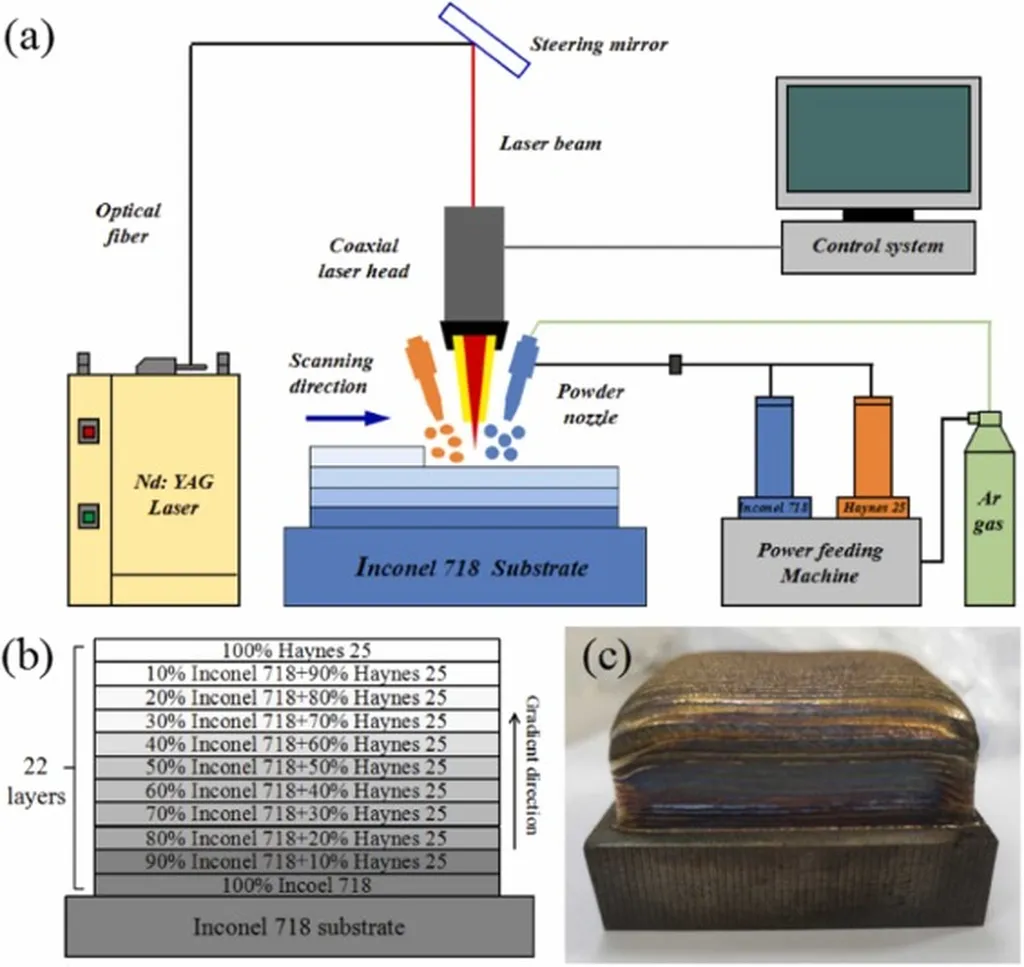In a recent study published in the Journal of Alloys and Metallurgical Systems, researchers have shed light on the hot corrosion behavior of Inconel 825, a high-performance alloy widely used in marine engineering and power generation. The study, led by Ilangovan Arun from the Center for Advanced Material Processing at Madanapalle Institute of Technology & Science in Andhra Pradesh, India, explores how this alloy fares under extreme temperature conditions, providing valuable insights for industries that rely on its durability.
Hot corrosion is a significant concern in maritime and industrial applications, where components are often exposed to harsh, high-temperature environments. Inconel 825 is known for its excellent corrosion resistance, but until now, the detailed mechanisms of its performance under hot corrosion conditions have been less understood. Arun and his team set out to change that.
The researchers used a cold metal transfer (CMT)-based directed energy deposition (DED) process to fabricate Inconel 825 walls. They then subjected these specimens to temperatures of 700°C and 900°C, simulating real-world conditions. At 700°C, the alloy showed a modest weight gain of about 0.15 mg/cm² over 50 hours, thanks to the formation of a dense and adherent chromium oxide (Cr₂O₃) layer. This layer acted as a protective barrier, keeping vanadium and sulfur at bay and maintaining stable corrosion kinetics.
However, things changed dramatically at 900°C. The weight gain shot up to 0.7 mg/cm², indicating a shift to linear corrosion kinetics. Scanning electron microscopy (SEM) and energy-dispersive X-ray spectroscopy (EDS) revealed that vanadium and sulfur had infiltrated the oxide layer, forming non-protective compounds like NiV₂O₆, CrVO₄, Cr₂S₃, and Ni₃S₂. This compromised the alloy’s ability to form a continuous Cr₂O₃ layer, leading to chromium depletion and accelerated corrosion.
Arun explained, “At higher temperatures, the protective oxide layer becomes less effective, allowing corrosive elements to penetrate and form harmful compounds. This shifts the corrosion process from a slow, parabolic rate to a faster, linear one.”
For the maritime industry, these findings are crucial. Ships and offshore structures often operate in environments where hot corrosion can significantly impact component lifespan and safety. Understanding these mechanisms allows engineers to better predict material performance and develop strategies to mitigate corrosion.
One of the key takeaways from this study is the importance of surface engineering techniques to enhance the performance of Inconel 825 in aggressive environments. By optimizing the alloy’s surface properties, industries can extend the lifespan of critical components and reduce maintenance costs.
Arun added, “Our study highlights the need for innovative surface treatments and coatings that can provide additional protection at high temperatures. This could open up new opportunities for the maritime sector to use Inconel 825 more effectively in challenging applications.”
In summary, this research provides a deeper understanding of how Inconel 825 behaves under hot corrosion conditions, offering valuable insights for the maritime and industrial sectors. By leveraging these findings, engineers and researchers can develop more robust materials and strategies to combat corrosion, ensuring safer and more efficient operations in harsh environments. The study was published in the Journal of Alloys and Metallurgical Systems, which translates to the Journal of Alloys and Metallurgical Systems in English, underscoring its relevance to the broader scientific community.

